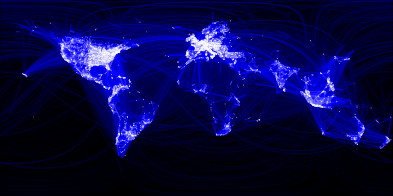What does it mean when Facebook says it has 901 million monthly active users on its network? According to figures out from the International Telecommunication Union, it effectively signifies that Facebook is the world’s largest social network by a very long shot. The ITU says in a new report that that the number of people using all social media services have passed the 1 billion mark. That is just 100 million shy of Facebook’s usage figure, giving Facebook a 90 percent share of all social networkers.
In contrast to the very biggest players of all — Facebook (900m+ users), Twitter (200m+ users) and LinkedIn (120m+ 150m+users) — the rest of the playing field is heavily localized, with services like QQ in China, Vkontakte in Russia, Mixi in Japan, and Google’s Orkut in Brazil, India, and Paraguay among those competing in the space, the ITU notes.
The ITU, which is focused on telecoms regulation, flags social media in its report as an area of growing scrutiny for telecoms regulators: not only are social networks becoming more ubiquitous, but services like Facebook are becoming communications mediums in their own right, with voice and text offerings that go head-to-head against similar services from carriers.
The 2012 “Trends In Telecommunication Reform” report also confirmed something else that Facebook has been telling us: mobile is fast becoming the main way that the vast majority of people are using its service.
That’s partly due to the fact that, although broadband usage continues to grow, the number of fixed broadband subscribers is still nowhere near the majority of households in most countries.
ITU notes in the last five years, the number of fixed broadband users has nearly doubled, and by early 2012 they stood at 591 million — in other words, equivalent to just over half of the number of all social media users.
But broadband growth remains very uneven. Within that 591 million figure, the ITU notes that developing countries have penetration of as low as 4.8 percent of users. Industrialized countries, it says, have average penetration of 26 percent. Part of the problem remains the affordability of broadband services: in Africa, for example, the average monthly price for broadband is still more than three times that of the average household income. Overall, there are still 5 billion people worldwide that have “never experienced even low-speed Internet, or have only experienced it through public or shared access,” the ITU says. And there are some very much on the other side of the digital divide not using broadband, either. (Hello, Steve Wozniak.)
On the mobile side of the equation, Facebook and outside analysts have noted that mobile usage is now outpacing usage from fixed connections on Facebook’s network.
But in developing countries, it looks like Facebook and other social networks will also hit a wall when it comes to picking up mobile users who fully engage with the site.
The ITU notes that only 8.5 percent of the population in developing countries had access to mobile broadband in 2011, with only five percent of global use coming from low-income countries. Effectively, this could mean that the users Facebook is picking up in emerging markets may have people using the site on smartphones, but will probably, more likely, be using something much more pared-down on a feature phone, such as Facebook Zero or something even more basic.
This includes the service launched by Orange in Africa that uses USSD technology — available on even the most basic GSM device — to let people search for friends, invite friends, accept or deny friend requests, write status updates and comment/like/unlike friends’ status updates.
That also suggests that until technology catches up with Facebook, as it continues to get bigger, it may also start to see a growth of less sophisticated usage and engagement on the site as well.
